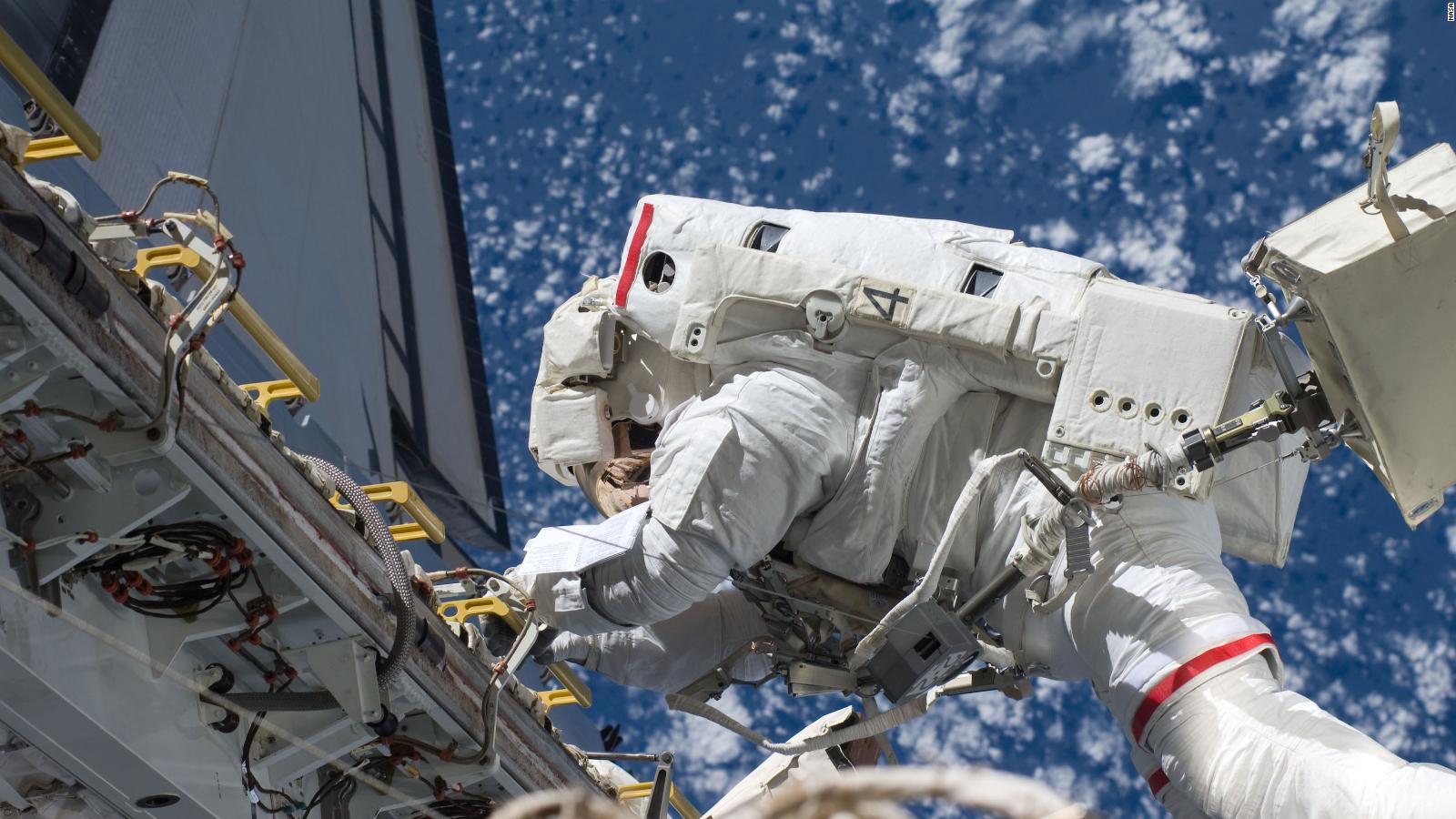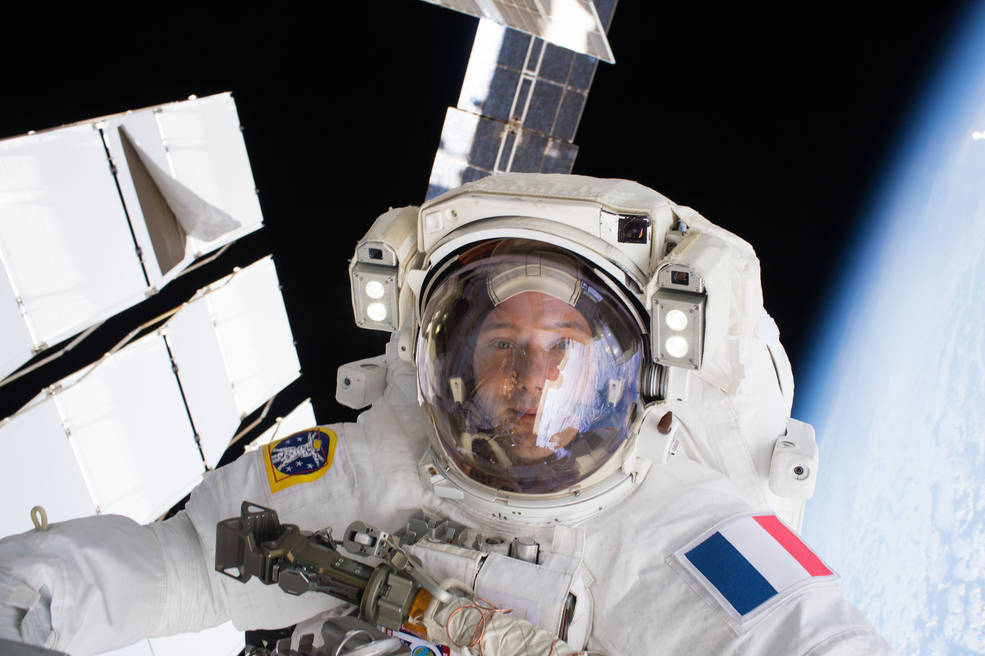
What Goes Into A Spacesuit Fit For Spacewalks?
Spacesuits are extremely complex pieces of equipment with a very important job. This includes not only keeping the astronaut within safe but also helping them work in the unique and dangerous conditions of space. Here astronauts are exposed to radiation, heat, cold, and much more. For these reasons among others, a high-quality spacesuit design is paramount for any mission.
NASA over time has developed and updated parts of spacesuits to improve different aspects. Some of the most important design features in a spacesuit include a cooling garment, helmet, gloves, lower torso, layers, a life support system, and much more. All of which combine into a single suit that acts similar to a small spacecraft designed for a specific human.
There are different types of spacesuits each with a different purpose and challenges. You can see this when looking at different launches across the industry. SpaceX, for example, equips its astronauts with a suit when launching for added safety and convenience however it’s not built for spacewalks. These suits are much bulkier and complicated due to the challenges and tasks they face.
Spacesuit Overview

A fully equipped spacesuit used during spacewalks protects the astronaut from the dangers of being outside a vehicle while in space or on the Moon. These spacewalking astronauts face radiation, debris, dust, and extreme temperatures. To put it in perspective, temperatures on spacewalks may vary from as cold as minus 250 degrees Fahrenheit to as hot as 250 degrees in the sunlight. The suits provide the proper pressure for the body and supply astronauts with water to drink and oxygen to breathe. Currently, when astronauts go for spacewalks outside the International Space Station, they use a suit called the extravehicular mobility unit, or EMU. For the future missions to the Moon apart of Artemis, NASA is working on a next-generation spacesuit called the xEMU.
This suit includes multiple new features and technological advances, but the suits share most of the same basic elements that work together to keep crew members safe and healthy while allowing them to accomplish their tasks when working outside their spacecraft in the harsh space environments. When looking at a spacewalk spacesuit, there are two main parts, this includes the pressure garment and the life support system. The pressure garment is the human-shaped portion of the spacesuit that protects the body and enables mobility. The primary components of the pressure garment are the cooling garment, upper torso, lower torso, and helmet. Here I will go more in-depth into some of the most vital components of these spacesuits.
Spacesuit Features

Top Half – The first section of the spacesuit I want to highlight is the upper half of the spacesuit. Starting with the hard upper torso. The hard upper torso is lightweight but strong and connects the inside of the suit with the appropriate systems in the portable life support system. It is shaped like a sleeveless shirt and connects to the arm assembly that covers the arms and joins the gloves. The upper torso of the new exploration suits will have a rear-entry hatch to allow astronauts to climb into the back of the suit. This improvement helps speed up the process quite a bit. Next, you have the very important helmet. The helmet on spacesuits built for spacewalks serves as a pressure bubble and is made of strong plastic to keep the pressure of the suit contained. It also has a ventilation system that provides astronauts with oxygen.
Helmets also contain a small foam block that astronauts can use to scratch their noses. Outside of this bubble is a protective visor that keeps the pressure bubble from getting bumped or scratched. On top of the protective visor are the sun visor and sun shades. The sun visor has a special gold coating that works like the astronaut’s sunglasses. Together, the movable sun visor and sunshades protect the astronaut from the sun’s strong rays, while still allowing a clear visual field. The helmet on the suits that will be worn for Artemis missions will feature a quick-swap protective visor that protects against the abrasive dirt of planetary bodies. The helmet for these new suits also features an elliptical shape that provides a better view of the ground around the spacewalker’s feet.
Bottom Half – Next is the bottom half which features many additional important features. Starting with the lower torso of the spacesuit. The lower section of the suit is made up of spacesuit pants, boots, and the lower half of the waist closure. A piece called the waist bearing helps the astronaut move and turn. A metal body-seal closure connects the lower torso to the hard upper torso. On the new suits that will be used for lunar surface missions, the lower torso includes advanced materials and joint interfaces that allow bending and rotating at the hips, bending at the knees, and hiking-style boots. With this new mobility, astronauts will be able to walk on the lunar surface, instead of doing the “bunny-hop” developed by Apollo moonwalkers.
Extra – Lastly I want to mention the extra aspects of a spacesuit that go throughout the entire spacesuit. Starting with the multiple layers. The flexible parts of the suit are made from as many as 16 layers of material. The layers perform different functions, from keeping oxygen within the spacesuit to protecting from space dust. Closest to the astronaut’s skin, the cooling garment makes up the first three layers. On top of this garment is the bladder layer that is filled with gas to create proper pressure for the body and holds in the oxygen for breathing. The next layer holds the bladder layer to the correct shape around the astronaut’s body. The ripstop liner is a tear-resistant layer. The next several layers are insulation and act like a thermos to help maintain the temperature inside the suit. The white outer layer reflects heat from the sunlight and is made of a fabric that blends three kinds of threads. One thread provides water resistance, another is the material used to make bullet-proof vests, and the third component is fire-resistant. Some suits are plain white and some have stripes to help tell one spacewalker from another.
Next is the life support system. On the back of the spacesuit is a backpack that houses the supplies and equipment to make the suit work. This backpack contains the oxygen that astronauts breathe and that pressurizes the suit. A regulator in the backpack keeps the suit at the correct pressure. A fan circulates oxygen through the suit and life support system where the carbon dioxide that astronauts exhale is removed from the suit. The backpack provides electricity for the suit and holds a two-way radio for communication. The backpack also contains water for the cooling garment, a chiller to cool the water, and a pump that circulates the chilled water. There even is a communication system worn under the astronaut’s helmet that contains earphones and microphones. This helps provide necessary communication between the astronauts and others.
Conclusion
Spacesuits designed for spacewalks are very important and play a key role in keeping astronauts safe along with helping them do their job. In the space environment, there are many different dangers that have to be accounted for when designing. This is why NASA put a lot of work into the design of different parts including the cooling garment, helmet, gloves, lower torso, layers, life support system, and much more. All of which combine into a single small spacecraft for a human. With the Artemis mission coming up, we can hope to see the next generation of spacesuits complete development on time ready for new missions to the Moon.
